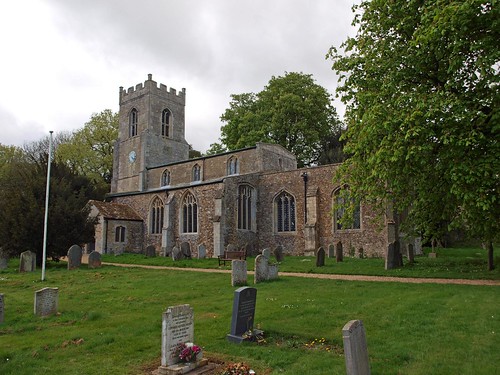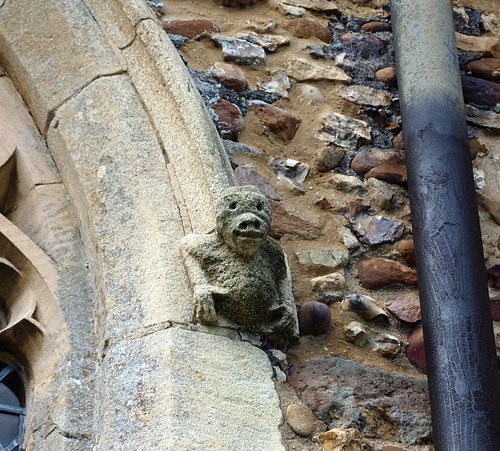It's a fairly run of the mill building in a pleasing churchyard and I liked it a lot; such a shame it's needlessly inaccessible.
ST ANDREW. Externally all Perp, of different materials and dates, with windows with two-centred arches and panel tracery, and four-centred arches, and also - in the tower W - uncusped. The bell-openings of the tower may well be post Reformation. E.E. S doorway and E.E. S arcade piers. But the spacing of the bays is too wide for E.E. work, and the arches are Perp. So is the W respond. The N arcade is Perp throughout, with capitals to the shafts towards the openings, a moulded continuous order, and the outer order or hood-mould given its own minor shafts with capitals towards nave and aisle. In the S aisle the Perp windows are set internally in much wider blank arches. Perp one-bay N chapel. The chancel roof has figures against the wall-posts. - FONT. Octagonal, Perp, with plain quatrefoils. - PLATE. Plate of 1656-7; Flagon of 1744-5 ; two Cups of 1828-9. - BELL. One bell is of c.1400, by William Dawe.
ABBOTS RIPTON. Its Moat Farm has timbers of Shakespeare’s day and an ancient gargoyle watching all who pass; and there are charming 16th and 17th century cottages by the church, which is a dignified place among the trees, with ancient stone heads looking out from its windows. The tower, about 400 years old, looks down on a nave, aisle, and porch of the 13th century, and has a bell which was ringing over these fields long before the tower was built, for it was made about 1400, another being dated 1671. There is a font with carving of the 15th century, a 13th century piscina, an Elizabethan altar table, and a window glowing with shields in fragments of 15th century glass; but perhaps its best possession is a group of figures looking down on the chancel, six men and women who have been holding up the beams since the 15th century, four more on the splendid timbers.


No comments:
Post a Comment